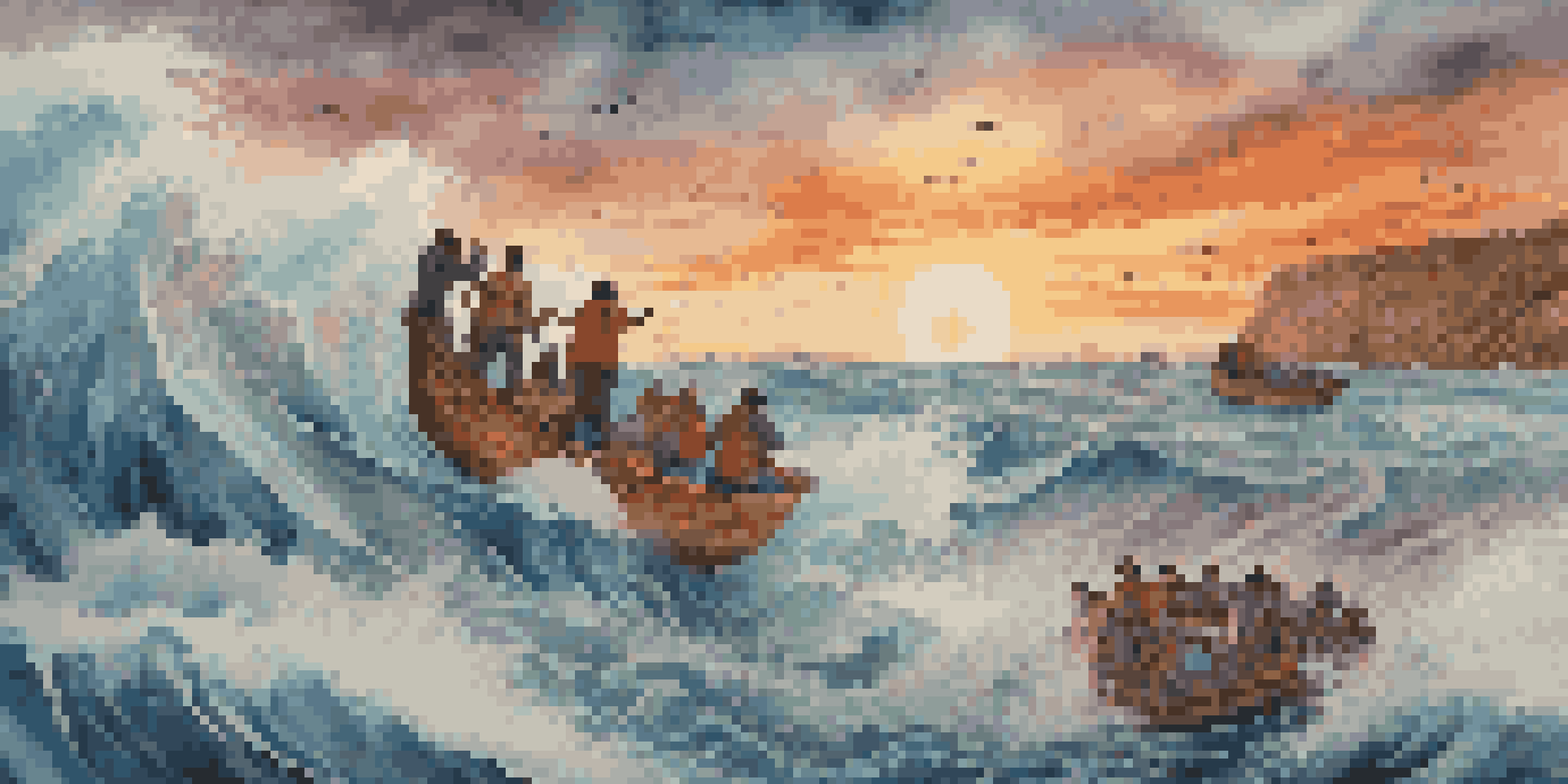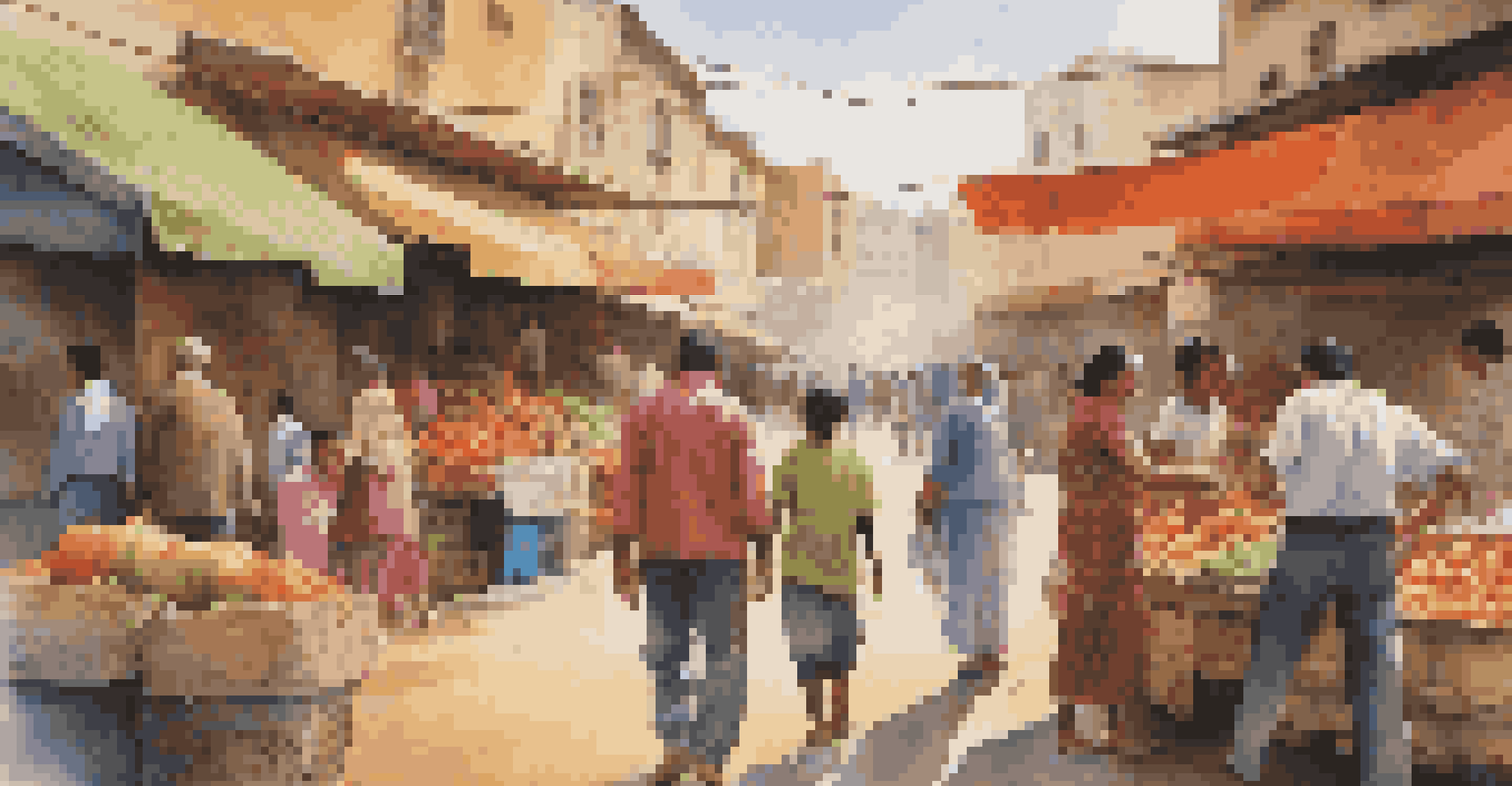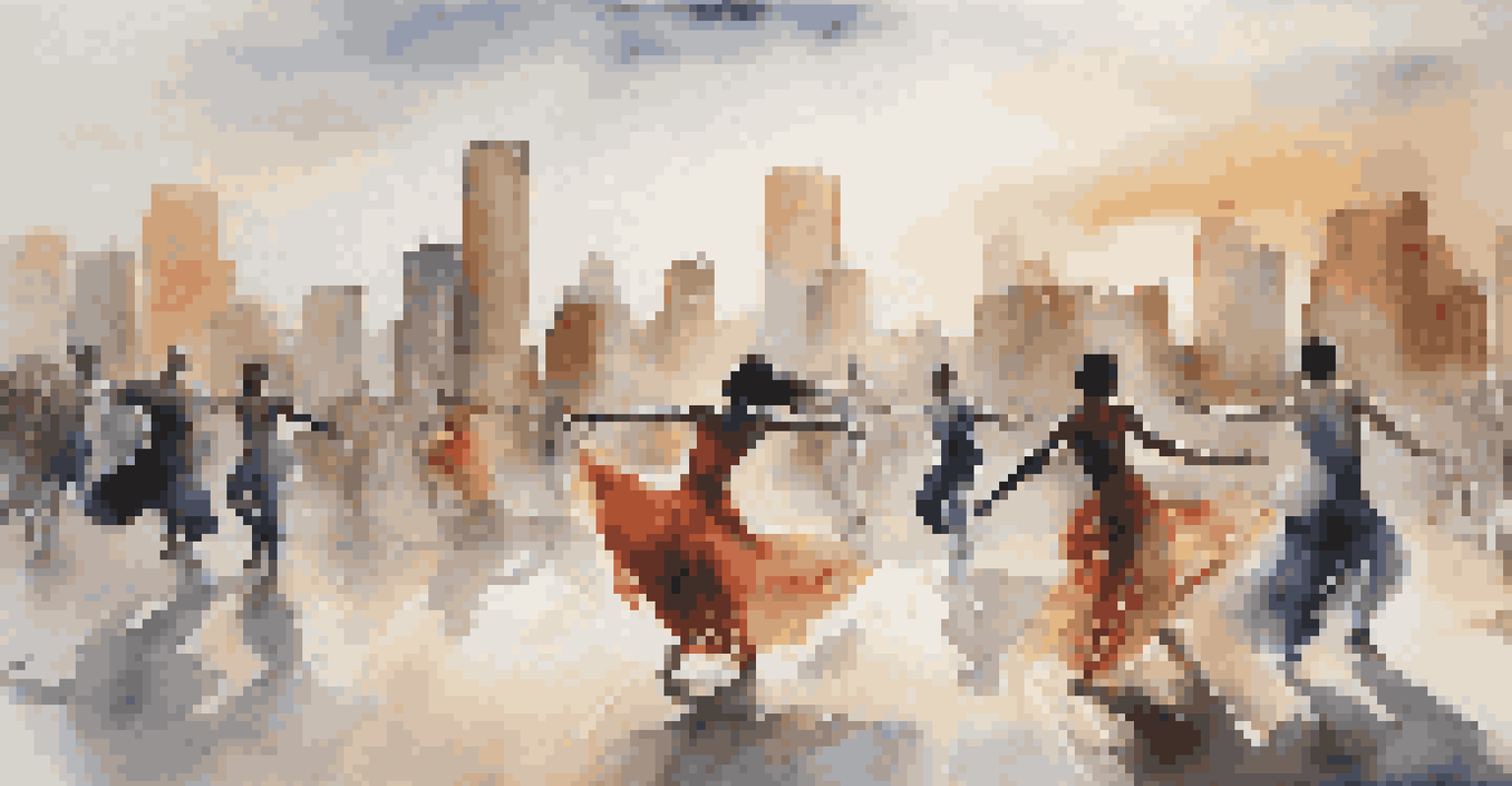Migrant Bodies: Art and the Representation of Displacement

Understanding Displacement Through Artistic Expression
Displacement is a complex phenomenon that affects millions globally. Through art, we can access the emotional and psychological landscapes of migrants. Artistic expressions, whether through painting, sculpture, or performance, serve as a powerful means to convey the stories of those who have been uprooted from their homes.
Art enables us to find ourselves and lose ourselves at the same time.
Artists often draw on their personal experiences or those of their communities to create works that resonate with the themes of loss and resilience. This connection allows audiences to empathize and understand the multifaceted nature of the migrant experience. For instance, a mural depicting the journey of refugees can encapsulate their struggles, hopes, and dreams within a single image.
Moreover, art can act as a form of protest, challenging societal narratives around migration. By highlighting the dignity and humanity of migrant bodies, artists invite viewers to reconsider their perceptions and engage in meaningful dialogue about displacement.
The Role of Visual Arts in Representing Migrant Stories
Visual arts play a crucial role in representing the diverse stories of migrants. Through photography, painting, and installations, artists capture the raw emotions and realities of displacement. For example, a series of photographs showcasing the everyday lives of migrants can reveal the beauty and struggle within their journeys.

These artistic representations often highlight the intersectionality of migration, encompassing issues such as race, gender, and socioeconomic status. By bringing these layers to the forefront, artists challenge the monolithic portrayal of migrants. This nuanced approach fosters a deeper understanding of the complexities involved in the migration experience.
Art Expresses Migrant Experiences
Artistic expressions allow audiences to connect with the emotional and psychological landscapes of migrants, fostering empathy and understanding.
Furthermore, visual arts can bridge cultural gaps, inviting viewers from different backgrounds to engage with these narratives. When audiences see the human side of displacement, they are more likely to develop compassion and advocate for change in policies affecting migrants.
Performative Arts: Capturing the Essence of Migration
Performative arts, including theater and dance, provide a dynamic platform for exploring migration themes. Through movement and storytelling, artists can embody the experiences of displacement, bringing to life the struggles and triumphs of migrants. For instance, a dance performance that interprets the journey of a refugee could evoke strong emotional responses from the audience.
The purpose of art is not a rarified, intellectual distillate; it is life, intensified, brilliant life.
These performances often create immersive experiences, allowing viewers to engage with the stories on a visceral level. By witnessing the physicality of displacement, audiences can better appreciate the urgency and gravity of these narratives. This connection can spark conversations about migration and its impact on communities.
Moreover, performative arts often incorporate elements of cultural heritage, celebrating the diverse backgrounds of migrants. This cultural richness not only enriches the art form but also fosters a sense of belonging and identity among displaced individuals.
Literary Arts: Narratives of Displacement
Literature has long served as a means to articulate the experiences of migrants. Through poetry, novels, and essays, writers can delve into the emotional and psychological ramifications of displacement. These literary works often reflect the inner thoughts and struggles of individuals navigating their new realities.
For example, a novel that follows a migrant's journey can provide insights into the challenges of assimilation and the longing for home. Such narratives not only humanize the migrant experience but also highlight the resilience and strength of individuals facing adversity. They create a space for readers to empathize with characters who may be vastly different from themselves.
Visual Arts Challenge Migration Narratives
Visual arts represent the diverse stories of migrants and highlight intersectional issues, encouraging a deeper understanding of their complex realities.
Additionally, literary arts can preserve the voices of marginalized communities. By documenting their experiences, writers contribute to a broader understanding of migration and its implications, ensuring that these stories are not forgotten.
Digital Media: Expanding the Reach of Migrant Narratives
In today's digital age, social media and online platforms have revolutionized how migrant stories are shared. Artists and activists use these mediums to amplify their voices and reach wider audiences. For instance, a video series documenting the lives of migrants can go viral, sparking global conversations about displacement.
Digital art and multimedia projects allow for innovative storytelling techniques, blending visuals, sound, and text to create compelling narratives. This versatility enables artists to engage younger audiences who may be more accustomed to consuming content online. By harnessing the power of technology, they can create impactful and accessible representations of migration.
Moreover, digital media fosters community building among migrants and allies. Online platforms can serve as spaces for sharing experiences, support, and solidarity, ultimately strengthening the collective voice of those impacted by displacement.
Art as a Tool for Advocacy and Social Change
The intersection of art and advocacy is a powerful force for social change. Artists often use their platforms to raise awareness about the plight of migrants and challenge injustices. For example, public art installations that depict migrant struggles can serve as a call to action, inspiring viewers to engage with the issues at hand.
By addressing themes of displacement through their work, artists can influence public perception and policy. Art has the unique ability to evoke emotion, prompting audiences to reflect on their beliefs and take action. This transformative potential makes art an essential tool in advocacy efforts surrounding migration.
Digital Media Amplifies Migrant Voices
Social media and online platforms enable artists to share migrant narratives widely, fostering community and advocacy for social change.
Furthermore, collaborations between artists and organizations can amplify these messages. By working together, they can create campaigns that not only highlight the experiences of migrants but also mobilize communities to advocate for change.
Challenges Faced by Artists Representing Migrant Experiences
While art can be a powerful medium for representing migrant experiences, artists often face challenges in their work. One significant issue is the risk of oversimplifying complex narratives. Artists must navigate the fine line between representation and exploitation, ensuring that their work honors the dignity of those they depict.
Additionally, funding and support can be limited for projects focused on migration. Artists may struggle to secure resources to bring their visions to life, especially when addressing sensitive topics. This scarcity can hinder the creation of impactful works that shed light on the realities of displacement.

Lastly, the reception of art related to migration can be polarized. While some audiences may embrace these narratives, others may resist or dismiss them. Artists must be prepared for this pushback and remain committed to their mission of raising awareness and fostering empathy through their work.